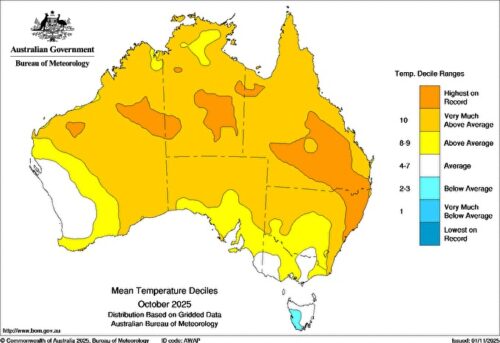We’ve seen no shortage of places across the eastern half of Australia break their rainfall record this soggy October, and the nation’s capital is the latest.
- Weather records have been kept in Canberra since 1939, and the old record for the wettest October was 161 mm in 1976.
- To 9 am on Thursday morning, the monthly tally for October 2022 was sitting on 160 mm, but a heavy burst of rain during the early afternoon delivered 3.4 mm by 3 pm.
- That brought the monthly tally for October to a record 163.4 mm.
- For the record, Canberra’s rainfall tends to be reasonably evenly distributed throughout the year, but October is on average the city’s second-wettest month with an average of 62.4 mm. So it is heading towards triple its monthly average.
- It’s also worth mentioning that Canberra’s rainfall to date for 2022 was 739 mm as at 9 am this morning, which means it is now sitting on 742.4 mm as we write this story on Thursday afternoon.
- The long-term annual average rainfall is 615.4 mm, so Canberra is again looking at a much wetter year than usual. The wettest year on record was 1950 with 1062.5 mm.
Meanwhile, after such a wet year to date, and with significantly above-average monthly rainfall in both August and September, it’s little wonder that the lawns of the bush capital and its nearby hills are looking especially green right now.

Image: The Murrumbidgee River just west of Canberra from Shepherds Lookout. Source: Patrick Tobin.
The local wildlife has also been snapped looking somewhat miserable during heavier downpours!

Image: Maggie here is not the only Canberran who is sick of getting wet. Source: Maria Del’Amore.
More rain is in store for Canberra this month, with showers likely on each day of the remainder of October except for Saturday.
To find out more about Weatherzone’s weather and climate products, please email apac.sales@dtn.com.






